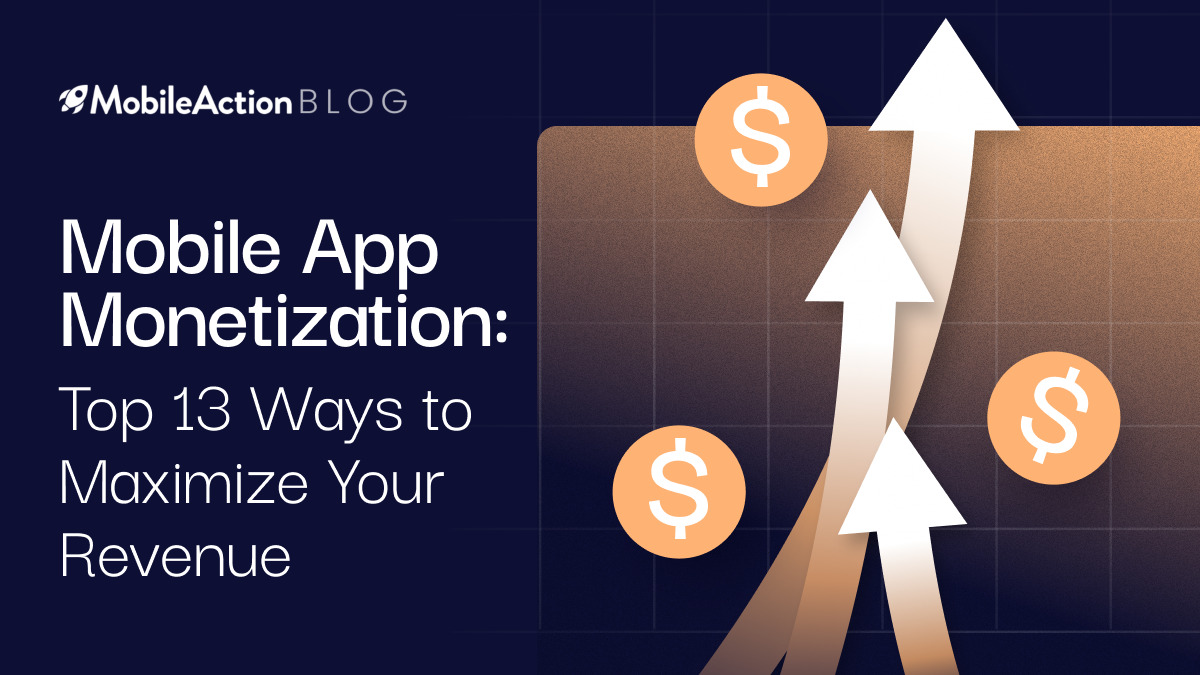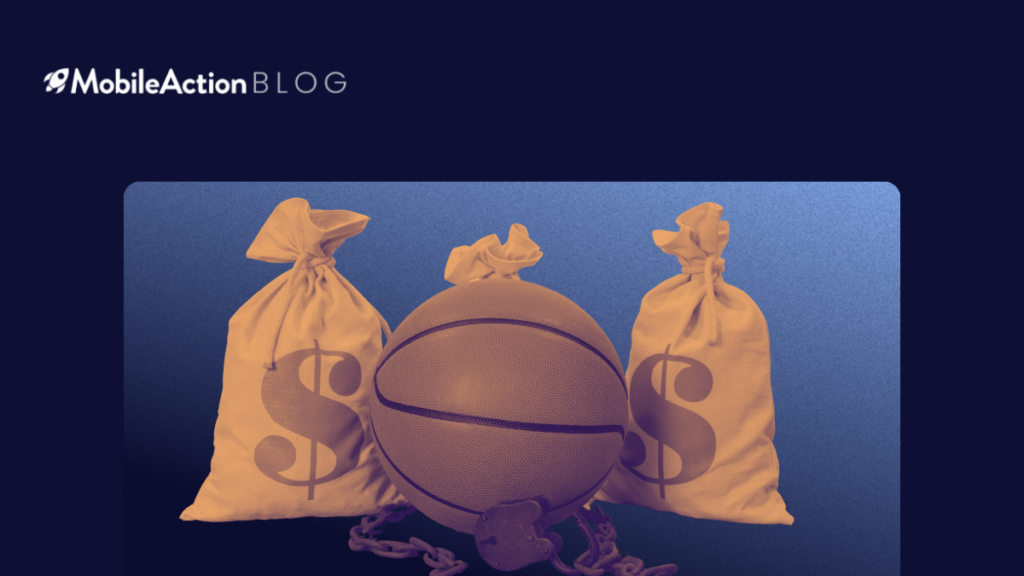Today, mobile apps make the world go around. We do everything via mobile apps, calling a taxi, going on a date, ordering food, playing games, learning languages, catching up with the most viral videos, and many more. On top of that, according to statistics, 95% of the apps are free of charge, which means we can download approximately 95 apps out of 100 for free.
But it is also worth remembering: every app is a business, and they need to make money to survive. So how do these apps with free access generate revenue? How can mobile app developers make money and invest in the further development of their apps?
The answer is mobile app monetization.
Whether you have a free app or a paid app, regardless of your expertise, we have collected 13 ways to start or optimize your mobile app monetization processes. At the end of this article, you are going to discover what mobile monetization is, why it is so important, what the best practices are to follow in 2023, how to choose the right pricing model by finding a balance between value and revenue, and some frequently asked questions about mobile app monetization.
Just a quick reminder: staying strong in the competition is at least as important as having a well-designed monetization model. For this purpose, Ad Intelligence by MobileAction was developed to help your app stay a few steps ahead of the competition.
Using Ad Intelligence helps you analyze various ad networks and provide insights into the creative sets of your competitors. In this way, Ad Intelligence is helpful in the long run as a good mobile app monetization model. By signing up for free, you can discover more about our game-changing solution!
So get ready and fasten your seatbelt to jump into the world of mobile app monetization.
What is Mobile App Monetization?
Mobile app monetization is the process of following a set of strategies to generate the necessary revenue to support your business. It is basically the concept of converting your app’s users into revenue without applying any download fee. So, although it is a way of generating revenue, charging some download fees for your mobile app is not part of the mobile app monetization process.
Due to the severe competition among them, free mobile apps are becoming more prevalent across the entire digital environment. Considering that there are more than 5 million apps available in the two biggest application stores, it is not difficult to predict that this competition will continue. As a result, users are becoming more and more reluctant to pay for any application.
As a result, app developers must take into account a variety of app monetization strategies. There are a number of monetization methods that enable mobile apps to convert their users’ actions into revenue. However, since there is no such thing as the best way, it is necessary to analyze which method is suitable for which app.
So let’s first continue with the prominence of mobile app monetization briefly, then dive deep into the best mobile app monetization strategies available in 2023.
Why is Mobile App Monetization Important?
The trend of free apps spreading continues to grow with a snowball effect. This means that the pay-per-download method is now an old-fashioned monetization strategy to generate revenue. For this reason, mobile app developers have to find alternative routes.
App developers can utilize one of the following app monetization models to make sure an app’s revenue keeps increasing while maintaining an excellent user experience. As an alternative, they can use a hybrid app monetization strategy that combines two or more ways to make money.
After choosing the right strategy, the first thing to do should be to move the app at least one step ahead of the competition. You can use the Creative Analysis feature of the Ad Intelligence tool to get ahead of your opponents’ creative sets. With Creative Analysis, you can filter time intervals, ad networks, and countries to get an overview of your competitors’ paid user acquisition efforts; see your competitors’ creatives and analyze impressions and clicks to understand what works for them; and get to the best-performing creatives faster by analyzing your competitors’ current and past creative tests.
If everything is crystal clear so far, we can start reviewing the best 13 mobile app monetization strategies in 2023.
Top 13 Ways to Monetize Your App in 2023
1. In-app Advertising (IAA)
This method offers a valuable source of revenue for apps that want to remain free in the app store. The most common way to monetize mobile apps is by running in-app ads. Providing content and ad formats relevant to your users can create a great user experience. Bu sebeple, mobile app userlarinin dikkatlerini farkli sekillerde cekebilmek ve onlara en iyi deneyimi sunabilmek icin birden fazla in-app advertising metodu bulunuyor.
There are five main types of IAAs:
Banners: Advertisers can post static or animated ads across a banner within your app using this simplistic and easy ad style. With banner ads, having eye-catching images and a compelling call to action are essential.
Interstitial Ads: This style presents advertisements in full-screen. Because of this, interstitial ads are more likely to prevent creative ad fatigue, a condition in which viewers are so accustomed to seeing banner ads that they fail to notice them. It’s crucial that these advertisements are inserted at natural pauses, such as the transitions between levels of a gaming game, as full-screen interstitials can be annoying.
Native Ads: Native ads work best on news websites and social media because they are made to blend in smoothly with their host app, appearing as another post in the feed. When used properly, these advertisements cause only little disturbance to the user experience.
Video Ads: Another common option is video advertising, which has tremendous potential for engagement and some of the highest CTRs of any media. Additionally, by rewarding viewers for watching an entire video, rewarded video ads allow you to increase the attraction of video ads.
Playables: These advertisements expose viewers to interactive gameplay as a try-before-you-buy strategy. Before receiving a CTA, users see a brief preview of the advertiser’s app. Because customers who choose to install will already be interested in the gameplay, this is an excellent approach for advertisers to lower uninstall rates.
2. In-App Purchases (IAP)
IAPs (in-app purchases) provide a unique revenue strategy that may even improve the user experience. Think about how you can improve the user experience with IAPs.
There are two types of IAPs:
Consumables: This type of IAP is for temporary or limited purchases. Extra lives in Candy Crush Saga, keys in Subway Surfers, and hearts in Score Hero can be good examples of consumables. What they have in common is that all of them give you extra chances to continue playing the game.
Non-consumables: This type, on the other hand, only needs to be purchased just for once. For instance, unlocking a new character in Subway Surfers and removing in-app ads in New Star Soccer are non-consumables.
While the ability to make an in-app purchase can be added at any time while playing the game, the wisest approach to doing so is to strategically place in-app purchase options where customers are most likely to need them.
3. Subscriptions
An additional popular way of monetizing your mobile app is through subscription services. You can give paying users of your app a different experience than those who just use the free version thanks to subscriptions.
You aren’t forced to take an all-or-nothing stance when setting up a subscription bundle for your mobile app. It might be wiser to build up multiple subscription packages with differing levels depending on what your app has to offer. For various user categories, you could want to provide a basic subscription, a pro subscription, or a premium subscription. Alternatively, maybe you can name it differently, such as Silver, Gold, and Platinum.
This way of monetizing mobile apps is very popular among dating apps such as Tinder and Bumble. In both of these apps, after you pay a monthly subscription fee, you can get unlimited likes, rewind your last swipe, and match people who are not in your range.
4. Freemium
Today, because of their countless advantages, freemiums are one of the most popular mobile app monetization strategies. Freemiums offer the basic features of a mobile app for free to everyone while offering exclusive access to users who only make in-app purchases. These in-app purchases enable them to use some premium features and/or access additional content.
Two of the most popular examples of freemium services are Spotify and YouTube. Both of them offer their basic services for free, but Spotify Premium and YouTube Premium users can access these services without having to watch or listen to ads.
Freemium subscriptions are advantageous for two reasons:
First, they enable users to try out your app before they need to pay some amount of money for an app they are not familiar with. In this way, the app becomes more persuasive. Second, people who prefer to use the free version of the app and never consider upgrading to the premium version help the app reach a wider audience by just downloading it.
5. Affiliate Marketing
By promoting other apps, goods, and services through your app and putting affiliate tracking in place, you can monetize your app by using affiliate ads.
People enjoy recommending things to each other, which is why affiliate ads are effective. This strategy can be quite helpful in converting if the audience has faith in the source.
Throughout your app, these affiliate schemes will advertise other mobile applications. The fact that app developers can choose which apps to advertise, even though the commissions paid in this app monetization approach are typically not high, can attract consumers to associate their app with similar companies.
Therefore, you should link the advertisement to display at relevant points in the user journey. The advertisement can recommend an app that is related to the user’s preferences.
6. SMS Marketing
Although SMS marketing is an old-school mobile app monetization method, it can still be effective. When the language in the SMS sent is retouched with today’s slang, humor, and speaking style, you can avoid the SMS being perceived as spam.
We can say that mobile applications can easily access our phone numbers since almost all of the apps we download require a membership, and our phone number is usually requested in this membership form. This makes the implementation of SMS marketing very easy.
However, there is a point to be noted here because knowing a user’s phone number does not mean that mobile apps can easily send messages to those apps. Mobile apps must obtain consent to send SMS to their members during the membership process.
Since we have seen almost half of the 13 ways, it is useful to mention the Advertiser Analysis feature of Ad Intelligence here. Advertiser Analysis lets you see how your competitors split up their ad creatives throughout various ad networks in various storefronts and time frames. Find the most profitable ad networks to increase your ROAS.
Find out which storefronts have the most app downloads in your genre and which languages your competitors are using in their marketing. With our ad analytics, you can discover which media types are most effective for your particular app category and outperform your rivals.
7. Email Marketing
Although it has many similarities with SMS marketing, another old-school marketing method, email marketing also has many unique advantages and disadvantages.
As in SMS marketing, mobile applications can easily access our email addresses, but again, mobile apps must obtain consent to send emails to their members. Luckily, an advantage of email marketing for an app developer is that it is easier and cheaper than any other mobile app monetization method.
Since this method will be weaker than many other mobile app monetization methods, it would be beneficial for mobile app developers to combine this method with another method and establish a hybrid model instead of choosing this method alone.
8. Influencer Marketing
People are more likely to believe recommendations from others than advertisements. Therefore, recommendations from influencers provide potential users of your app with social proof.
Mobile app influencer marketing helps you build a robust brand image, establish long-lasting relationships, gain access to your intended audience, establish authenticity, increase social media visibility, and attract a large number of new users.
However, there are two points that mobile app developers should consider. First, there should be a psychological contract between the influencer and the target audience, which means the users of the mobile app must love and trust the selected influencer. Secondly, since influencer marketing is a costly marketing method, especially for indie developers who are in the very early stages of the mobile app development industry, the potential financial burdens it may create should be carefully analyzed.
9. Sponsorships/Partnerships
If an app is very popular in a particular market, companies operating in that space may offer sponsorship to the app developer to show their brand to app users.
Therefore, during the ideation phase of your next app, you may also think about the target user base the app can appeal to and the brands that are likely to be of interest to this audience. Mobile app monetization through sponsorship, partnership, or app purchase can also be good option if the user base is large enough.
Sponsorships and partnerships can also create a cross-promotion opportunity in which you can promote other products and services to increase user acquisition and revenue. However, especially in the early stages of mobile app development, finding a sponsor is not very easy since most businesses prefer to partner with mobile apps that their target audience is familiar with.
10. Licensing
Licensing can also be a way of monetizing a mobile app for a developer. It basically means selling your app’s codes and/or user data. If you really think you have a strong code that other mobile app developers can benefit from or you can collect valuable user insights from your app’s audience, you can consider selling them to generate revenue.
For instance, if you have developed a well-built mobile game that has been approved by other developers and has successfully reached large audiences of players, other developers may approach you and offer to re-skin your game. Imagine licensing Flappy Bird as its developer 10 years ago. Undoubtedly, the possible revenue you could generate would be enough to develop several new mobile apps.
Unfortunately, especially for indie mobile app developers, licensing codes and data can be very expensive. In addition, there is no possibility of selling all the user app data and insights you collect because, in most countries, some data from users fall within the scope of data protection laws and regulations.
11. Crowdfunding
Crowdfunding is the practice of raising money from a large number of people on the Internet. Developers who prefer to fund their businesses with crowdfunding promote some or all features of their apps on some websites such as Kickstarter, Patreon, GoFundMe, etc.
This way of monetizing is very effective, especially if you are in the early stages of developing your app. With a well-designed, engaging, and persuasive crowdfunding campaign, any mobile app can raise the desired amount of money in a very short period of time.
Crowdfunding does not only give you a helping hand in terms of financial support but also creates a built-in community of users who can promote your app by word-of-mouth, provide valuable reviews and comments to help you optimize your app, and support you during your app development process. However, when there is no application in sight and it is very difficult for a new business to find a correct and strong brand voice, crowdfunding campaigns may not look convincing enough.
12. Donations
Although it looks similar to Crowdfunding at first glance, donations are a unique way of monetizing mobile apps. Even if most of their advantages and disadvantages are common with crowdfunding, donations can be leveraged for any mobile app at any stage.
In mobile apps monetized through donations, the app’s users serve as “patrons” and raise some money. With their help, developers can offer the entire platform for free to everyone.
Suppose mobile app developers want to get the most out of this monetization strategy. In that case, they can offer suggestions about how much a user should donate in order to make a significant contribution. In this way, patrons will see that their money serves a good cause and that these donations are really useful in the development or optimization of the mobile application.
13. Offerwalls
Offewalls offer rewards to app users in exchange for taking some desired actions and completing certain tasks. These tasks can include completing surveys, playing games, signing up for some websites, downloading apps, or reaching a certain level or rank in a game.
As offerwalls are a mobile app monetization method that makes it easy to integrate with other apps and websites, they facilitate user migration between two businesses. For this reason, mobile app developers can employ offerwalls and affiliate marketing at the same time as a hybrid monetization model.
If you’ve read all these monetizing methods and learned how to get one step ahead in competition with Ad Intelligence’s Creative Analysis and Advertiser Analysis features, you might be interested in the Top Charts in Ad Intelligence as a final step.
In Top Charts, you can see Top Advertisers, Top Ad Publishers, Top Creatives, and Top Developers, examine the millions of creatives in apps, discover who is dominating the ad ecosystem across different ad networks, and identify the most active app publishers to get a better understanding of the competition.
Key Takeaways
- Mobile app monetization involves converting users’ actions into revenue without charging a download fee.
- Mobile app monetization is crucial for app developers to generate revenue and invest in app development.
- With over 5 million apps available in the two biggest app stores, competition is increasing, making users more reluctant to pay for apps. As a result, 95% of the available apps do not charge a download fee.
- To maximize revenue, you should consider 13 ways to optimize their app monetization strategies, whether they are free or paid. These methods are In-app Advertising (IAA), In-App Purchases (IAP), Subscriptions, Freemium, Affiliate Marketing, SMS Marketing, Email Marketing, Influencer Marketing, Sponsorships/Partnerships, Licensing, Crowdfunding, Donations, and Offerwalls.
- By analyzing which method is suitable for each app, you can pick one or multiple strategies to employ and ensure your mobile app’s revenue continues to grow while maintaining an excellent user experience.
- If just having a well-designed mobile app monetization model doesn’t satisfy you and you always aim for better and further, why don’t you schedule a demo today and discover more about our ASO solutions?




